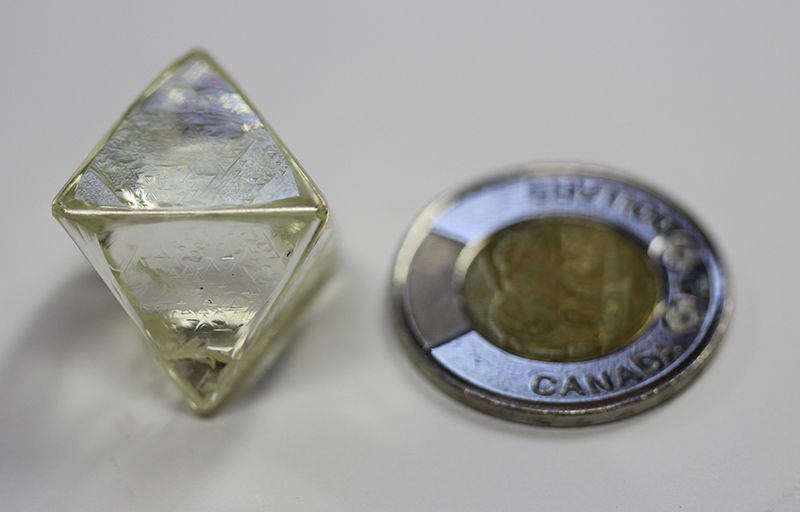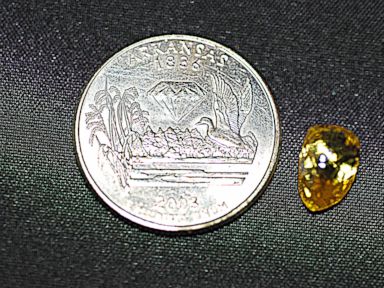Despite living in an impoverished country under sanctions, some in
Zimbabwe seem awash in money, judging by the Mercedes-Benzes parked at a
country club and the private woodland estate with artificial lake and
mansion built by the nation's police chief.

The wealth enjoyed by
just a few comes, at least in part, from the vast Marange diamond field
that was exposed by an earth tremor in 2006. The deposit in eastern
Zimbabwe is the biggest diamond field found in Africa for a century,
worth billions of dollars.
Now, as most Zimbabweans remain mired
in poverty, with government coffers short on funds to build and maintain
the nation's roads, clinics, utility services and schools, questions
are being asked as to where all the money went and who benefited.
A
recent bipartisan parliamentary investigation concluded that tens of
millions of dollars in diamond earnings are missing from 2012 alone. The
lawmakers who wrote the unprecedented and unusually candid report said
their "worst fears were confirmed" by evidence of "underhand dealings"
and diamond smuggling since 2009.
In a speech opening parliament on 17 September, President Robert Mugabe
took the rare step of accusing one top mining official and ruling party
loyalist of accepting a $6m bribe from Ghanaian investors to obtain
diamond mining rights in Marange. Mugabe said Godwills Masimirembwa took
the bribe when he was head of the state Zimbabwe Mining Development
Corporation which is in charge of mining concessions.
Masimirembwa
quit that post to contest the 31 July national election as a candidate
for Mugabe's Zanu-PF party but failed to win a parliament seat.
Masimirembwa denies any wrongdoing.
The parliamentary report and a
human rights group say diamond mining has led to serious human rights
abuses and that diamond concessions were awarded by government officials
to enrich top members of the Zanu-PF party, of the security forces and
Chinese allies.
In declaring his innocence, Masimirembwa said the
purported deal with the Ghanaian investors was discussed with national
Police Chief Augustine Chihuri and then Mines Minister Obert Mpofu, a
longtime business associate of Masimirembwa who is also one of the
nation's wealthiest businessmen.
Chihuri and Mpofu have frequently
insisted in the state media that their wealth comes from legitimate
business empires to make up for poor salaries paid for full-time
government duties.
Expected revenues from the Marange diamond fields have scarcely materialised.
Former Zimbabwe Finance Minister Tendai Biti
says he was promised $600m for economic and development projects from
diamond revenues last year but only received $41m. Nothing was paid into
the national treasury up to the disputed July elections that the
Zanu-PF won, a vote result that caused the end of a coalition government
with the MDC party that Biti belonged to, and the loss of his Cabinet
seat.
About $2bn in Zimbabwe's diamond revenues have been
unaccounted for since 2008, according to Global Witness, which campaigns
against natural resource-related conflict and corruption and associated
environmental and human rights abuses.
Zimbabwe is the
world's fourth-largest diamond miner, producing an estimated 17 million
carats this year, according to the Kimberley Process which is charged
with ensuring that gems reaching world markets don't bear the taint of
being "blood diamonds".
Marange diamonds have been declared conflict free.
But controversy and secrecy have swirled around Marange since the earth opened up and exposed its riches.
The
discovery lured thousands of impoverished Zimbabweans to dig in the
alluvial deposit. In 2008, the Zimbabwean army sealed off the 60 000ha
area to take control of the mining. At least 200 people died in a mass
expulsion of people living in the closed area, Global Witness and other
rights groups have alleged.
Chinese construction contractors built
an airfield at the Marange diamond fields. Executive planes arrive
there and at a bonded warehouse alongside the runway at Harare's main
airport, without traceable flight plans or having to go through customs
and immigration formalities, say commercial pilots who say they have
complained of the irregularities to aviation authorities. They insisted
on anonymity because of fears for their safety.
Some are living high from diamond deals.
As
children begged in the street a block away, Zimbabwean diamond company
executives accompanied by elegant young women arrived at a popular
Harare nightclub last year, ordered drinks for about 120 patrons and
picked up the $ 4 000 tab, said a person who witnessed the scene and who
demanded anonymity to prevent reprisals.
The identities of
owners, directors and shareholders in diamond enterprises have never
been officially disclosed, though the Zimbabwe Republic Police Trust, a
business enterprise of the police force, is publicly listed as holding a
20% stake in the Ghanaian diamond investment project.
The
parliamentary panel's report said powerful officials, politicians and
police and army commanders repeatedly tried to thwart the probe into
diamond dealings. The chair of the 22-member panel, Edward
Chindori-Chininga, a former Mugabe mines minister, died in a car crash
just days after he signed the report in June.
Police said Chindori-Chininga's death was accidental and that his car had veered off the highway and slammed into trees.
Car
wrecks or mysterious accidents have taken the lives of 12 senior
politicians, all of whom were believed to have bucked official policy,
in the past two decades, according to local press reports.
The
parliamentary committee's report said several officials lied while
giving evidence under subpoena and that diamond earnings are not only
shielded from scrutiny but are not channelled into the state coffers. It
said the Marange fields in particular are a no-go area, shrouded in
secrecy and deception. The mining companies don't even buy food or
services from surrounding communities, the report said.
Mugabe's government and Zanu-PF have repeatedly denied diamond revenues have been siphoned off.
But Global Witness says otherwise.
"Our
research has exposed links between Zimbabwe's two largest diamond
mining companies and the Zimbabwean military and other Zanu-PF
insiders," said Emily Armistead, senior campaigner for Global Witness.
"It
is not clear where the money is going," she added. "It appears there is
a mixture of corruption enriching specific individuals and some funds
going to security operations. Our concern is that it could be used to
fund repression and human rights abuses."
The difficulty with
monitoring diamond earnings lies in the "opaque" way the mining
enterprises were formed and financed, said Zimbabwean economist John
Robertson. Information on their expenditure, profits and staff levels
have not been divulged, he said.
"You are not allowed to know what is going on and if you need to know that amounts to attempted espionage," Robertson said.
So far, no legal action has been taken against Masimirembwa, the man accused by Mugabe.
And
despite widespread reports since September in the Zimbabwean press that
other top political and military figures would likely be exposed, so
far none has.










